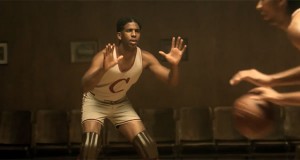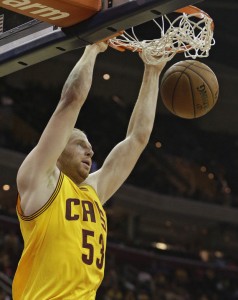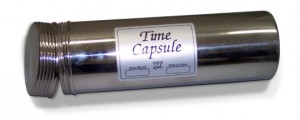Almost Near the Top
2014-11-13During the past three seasons, Austin Carr has often said, “Kyrie has got to pass the ball. He can’t just dribble it.” That’s been said with lots of enthusiasm when the Cavs have been down during a fourth quarter, and Kyrie Irving’s hero ball was being thwarted by double teams. LeBron James even said Kyrie needs to be a point guard first and a scorer second last week. While it is definitely true that assists result in a healthy offense that generates easy points, they actually are just one tiny factor in creating a transcendent offense. Let me pass you some stats to get this assist talk started.
If you look at the numbers, the Cavs assist on only 53.7% of their made baskets and that ranks them 23rd as of today. If you look at raw assist numbers, they are getting 19.2 a game, which is good for the sixth to last ranking in the league. Now, this is where your mind is about to be blown. If the Wine & Gold managed to grab an extra assist each game, their assisted basket percentage jumps to 56.5%. That ranks them 18th out of 30 teams. Just going by assists that puts the team 21st.
Now, imagine LeBron decides that he really really wants to get Alex Kirk a basket and adds another assist to the previous made up one bringing the Cavs to a crazy 21.2 dishes a game. They would then be assisting on 59.6% of their points and be 15th in the league. As far as assists, that would push them to 16th.
Imagine Dion Waiters is now told he isn’t allowed to get assists anymore. He would surely defy that edict, and the Cavs would easily grab three more helpers a game to have 22.2. Their assisted shot percentage would then be 62.5%, and that is good for sixth among all teams. Just going by assists that places them in the 11th spot.
It should be pretty clear that getting a few more assists a game really changes a team’s ranking and that assisted shot percentage and assists are loosely connected (especially because assist percentage works on how many field goals are made).
With that being noted, let me continue to blow your mind. Going by the Cavs actual assisted shot percentage, they rank one better than the Dallas Mavericks, who are currently the number one offense in the league getting 112.3 points per 100 possessions. Going by the Good Guys fake ultimate assisted basket percentage of 62.5% makes them neighbors with the 76ers who have the league’s worse offensive efficiency rating of 93.5. So, helped shots don’t really matter that much when thinking about how great an offense is. Heck, assists don’t really matter. Dallas ranks just 13th in that stat.
What Is There Besides Assists?
So why are they so great? There are a few things the King’s Men can learn from the Dallas offense. First, good offenses take lots of shots. That’s obvious, you can only score if you’re shooting, just ask Kobe. The Mavs are taking the seventh most shots per game while Cleveland is taking the 12th most at 82.7 heaves per 48 minutes. I’m being really obvious now, but to be good you have to make shots. The Blue & White make the second most shots, and the Cavs make the 23rd most.
Making the most of every possession though is where the Mavs really wreck opposing defenses. The best teams don’t get their shots punched into the third row, something that is almost the same as having a shot attempt ripped away (Dallas gets blocked at a bottom five rate). The Cavs are being blocked 6.2 times a game, which is a top five amount. If you didn’t count all the blocked shots in their field goal attempts, they would only be taking 76.5 shots a game, and that is nearly the same number of shots the Grizzlies, a slow plodding offense, get a game with swats being considered. The Raptors and Wizards also get about that same amount of shots with blocks being accounted for. Being blocked regularizes what could be an amazing offense for the Cavs.
Everyone on the Wine & Gold should consider taking a second pump fake or hesitation dribble when they are near the rim to avoid being swatted. They could even pass the ball to an open back door cutter and fix two stats with one action. Because the Wine & Gold avoid solid defense like they’re third graders avoiding cooties, they don’t limit other teams’ shot attempts like the Grizzlies, Wizards, and Raptors do (those three are all top ten defensive teams). That’s an issue.
There is good news though from all of these numbers. The Cavs are actually really close to becoming elite offensively. They turn the ball over at a bottom five rate, so that’s something that doens’t need to be worked on. The Mavs, the best offense, turn it over the least.
The Cavs are also near the bottom of the league as far as steals and blocks go. This will probably improve as a more workable defense comes together, which is only going to get them a few more possessions each game and allow them to get up even more shots.
Lastly, the Cavs three ball has yet to be fully utilized. They are 14th as far as made threes with just 7.7 a game. The Pacers make that many; they’re missing half their team. And, the Cavs are shooting 36.5% on threes, a top ten percentage. Like I mentioned yesterday, as the offense becomes more fluid, there will be more corner threes and more threes in general; the midrange shots and straight-on threes will be eliminated from the offense. That is going to bump up the Clevelanders offense even more. If they added one more made three a game, they would be grabbing 105.3 points a game and be the third highest scoring offense.
In conclusion, the Cavs are an extra assist, a made three, one less blocked shot, and maybe an extra steal away from being an offense that someone would put in a time capsule for the aliens to base all future post-Earth basketball upon.
Stats for this piece came from NBA.com and ESPN.com. Please note that this is just an illustrative piece.




I will say one thing, mid range shots are not going away. We’re not trying to be Houston.
Kyrie and Bron both take a high volume of mid range shots and it’s part of their game.
Assisted buckets matter more when there is pressure. When the game gets close at the end and everyone gets tight, it is far more effective to find an assisted bucket than to have someone try to do it all themselves. This is a bit of a theory, I suppose, that I don’t have any advanced stats to punctuate…but an assisted bucket is typically one in the natural flow of an offensive possession and thus there will be more muscle memory involved and thus less risk of muscle tightness. It’s a bit like tennis. A point won on pure effort instead… Read more »
Yeah it would be nice if we could give her the D
I’m OK with Marion starting and Dion coming off the bench. Of course if we do this it means Dion is leaving as soon as he hits free agency and I wouldn’t blame him going to a team where he can start and star.
But having Marion start and Dion off the bench doing Dion things makes the most sense for this team.
I think reverse psychology would work with Dion.
We also have shotmakers boosting our assist totals. If you look at assist opportunites per game, we’re 3rd worst at 37.2, 0.6 ahead of the last place Kings who ISO Rudy Gay or Demarcus Cousins every time down and 14.5 behind the league leading Boston Rondos.
The goal is not assists though. The goal is to score. I don’t see why anyone cares about assist rate. If we are scoring at a high level, no one cares or should care.
The Heat led the league in passes per possession last year and they still got blown away by a team that was able to better score.
I’ve posted this several times but in Kyrie’s 40+ minutes, 0 assist game he posted a 127 O Rating, meaning Cleveland score 1.27 points per possession when he was on the court and that’s an incredible number.
Assists aren’t bad but they’re devoid of context. Wall dribbles more than anyone in the league but it leads to assists (and a below average offensive rating) so he’s great!